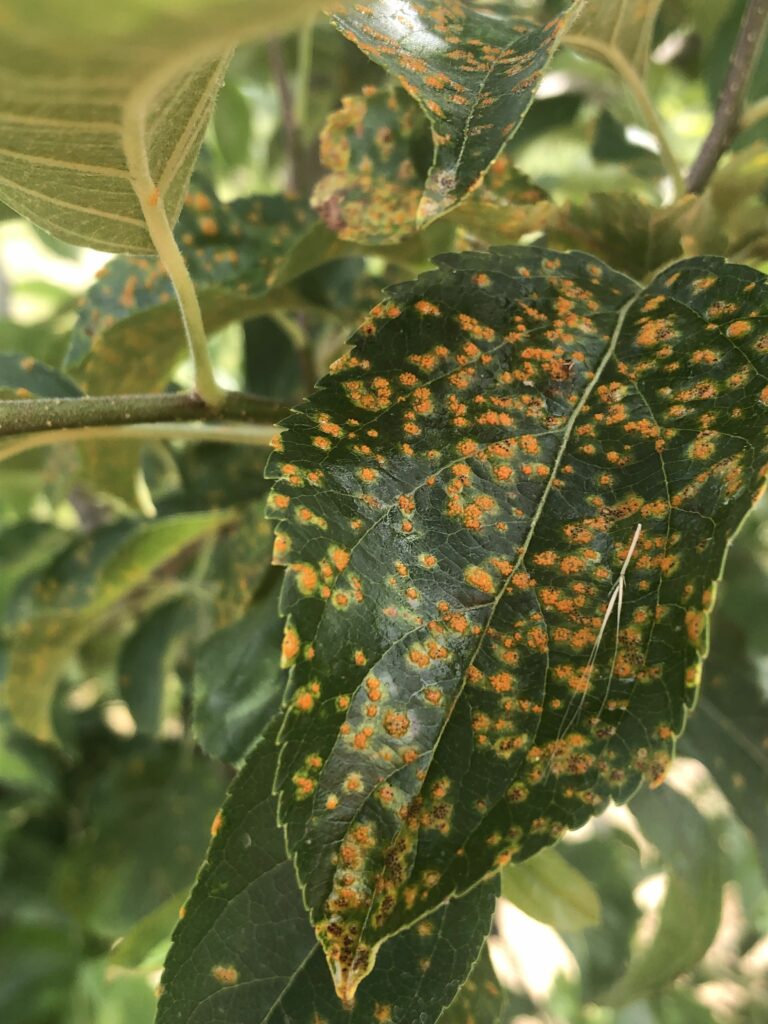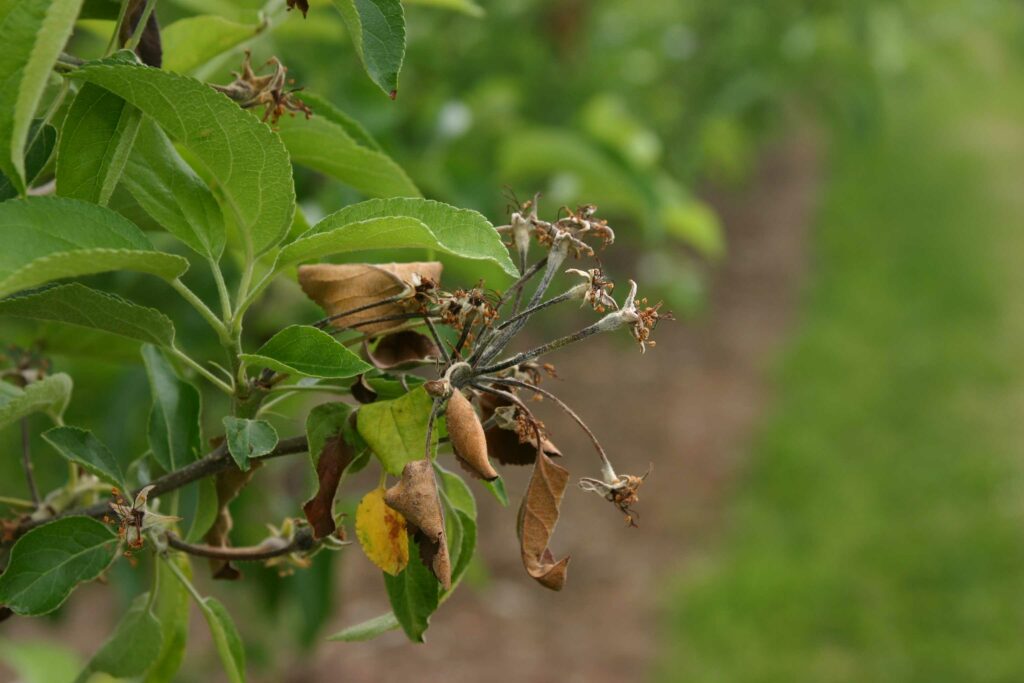Apple Disease Update: Pink Bud and Bloom
go.ncsu.edu/readext?1064356
en Español / em Português
El inglés es el idioma de control de esta página. En la medida en que haya algún conflicto entre la traducción al inglés y la traducción, el inglés prevalece.
Al hacer clic en el enlace de traducción se activa un servicio de traducción gratuito para convertir la página al español. Al igual que con cualquier traducción por Internet, la conversión no es sensible al contexto y puede que no traduzca el texto en su significado original. NC State Extension no garantiza la exactitud del texto traducido. Por favor, tenga en cuenta que algunas aplicaciones y/o servicios pueden no funcionar como se espera cuando se traducen.
Português
Inglês é o idioma de controle desta página. Na medida que haja algum conflito entre o texto original em Inglês e a tradução, o Inglês prevalece.
Ao clicar no link de tradução, um serviço gratuito de tradução será ativado para converter a página para o Português. Como em qualquer tradução pela internet, a conversão não é sensivel ao contexto e pode não ocorrer a tradução para o significado orginal. O serviço de Extensão da Carolina do Norte (NC State Extension) não garante a exatidão do texto traduzido. Por favor, observe que algumas funções ou serviços podem não funcionar como esperado após a tradução.
English
English is the controlling language of this page. To the extent there is any conflict between the English text and the translation, English controls.
Clicking on the translation link activates a free translation service to convert the page to Spanish. As with any Internet translation, the conversion is not context-sensitive and may not translate the text to its original meaning. NC State Extension does not guarantee the accuracy of the translated text. Please note that some applications and/or services may not function as expected when translated.
Collapse ▲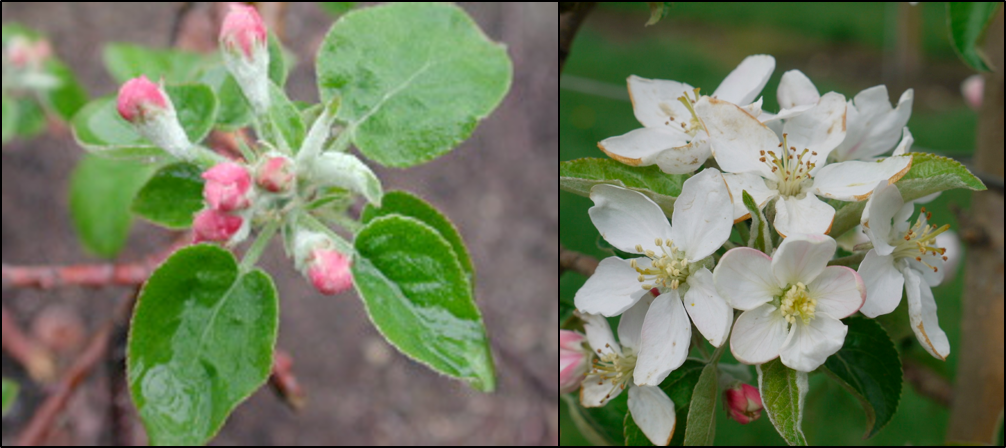 Well, green tip to bloom seemed to progress fairly rapidly this year! Just two weeks ago we were putting on our green tip application of copper at the MHCREC in Mills River. It’s funny, looking back at my records from 2020, green tip and bloom occurred at a similar time in Henderson County…. This year, I plan to provide weekly updates either Sunday evening or on Monday mornings so that you can best plan your week. Things may change some as we get into cover sprays, but we can cross that bridge when we get there (at this rate it may just be a few weeks). In this post, I’ve included the main diseases you should be focusing on for the pink/bloom period. Next week’s post will include a greater focus on shoot blight management. You should have also received a blossom blight infection alert on March 30th. Please use information in that post along with this post to plan your sprays this week. I’ll likely be providing another blossom blight infection alert on Wednesday (April 2nd).
Well, green tip to bloom seemed to progress fairly rapidly this year! Just two weeks ago we were putting on our green tip application of copper at the MHCREC in Mills River. It’s funny, looking back at my records from 2020, green tip and bloom occurred at a similar time in Henderson County…. This year, I plan to provide weekly updates either Sunday evening or on Monday mornings so that you can best plan your week. Things may change some as we get into cover sprays, but we can cross that bridge when we get there (at this rate it may just be a few weeks). In this post, I’ve included the main diseases you should be focusing on for the pink/bloom period. Next week’s post will include a greater focus on shoot blight management. You should have also received a blossom blight infection alert on March 30th. Please use information in that post along with this post to plan your sprays this week. I’ll likely be providing another blossom blight infection alert on Wednesday (April 2nd).
Apple Scab (Primary Infection)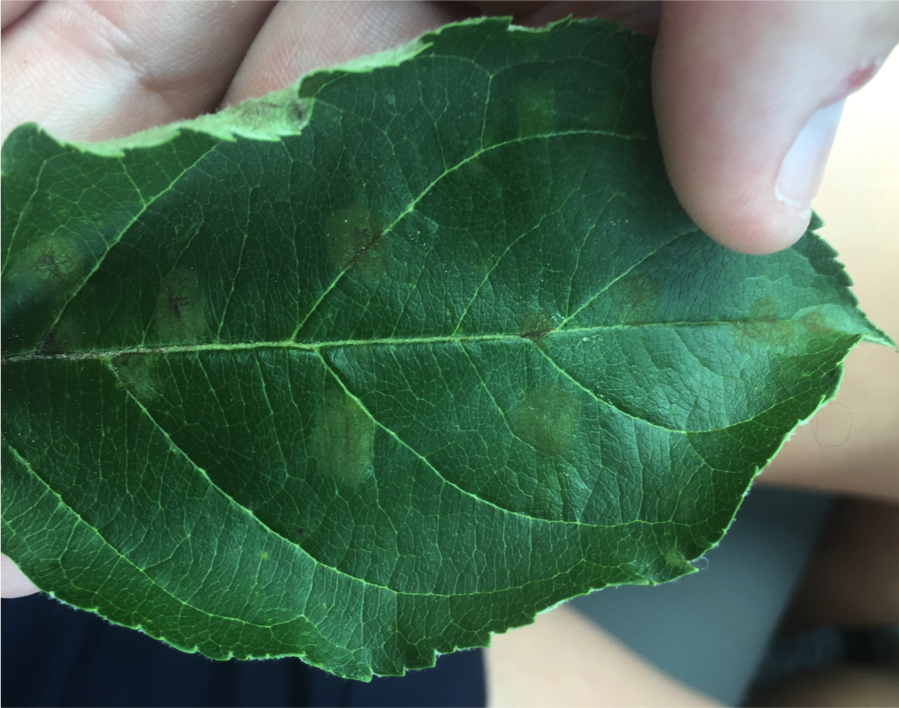
During this time and continuing through petal fall, ascospores (spores that overwintered primarily on leaf litter) will mature rapidly. Once “ripe”, these spores will be released during a rain. Therefore, any green tissue not protected is susceptible to infection. Given the high temperatures over the past few days, there likely was emergence new, unprotected tissue. At MHCREC in Mills River, we initiated the model when approximately 50% of the buds on ‘Gala’ reached green tip (~ March 10, 2025). As of March 30, ascospore maturity is at 8% and there as been a cumulative ascospore discharge of only 8%. Infection events in Henderson Cty are predicted from March 30-April 2, 2025. If it’s been a week or more since you’ve applied a fungicide, my suggestion would be to get a fungicide on March 31st or April 1st (see suggestions below).
Powdery Mildew
If you had a powdery mildew problem in some of your blocks last year, it very well likely could come back with a vengeance this year. Likely the first sign/symptom of powdery mildew in your orchard will be a white-silvery colored “flag” shoot that is stunted in growth: 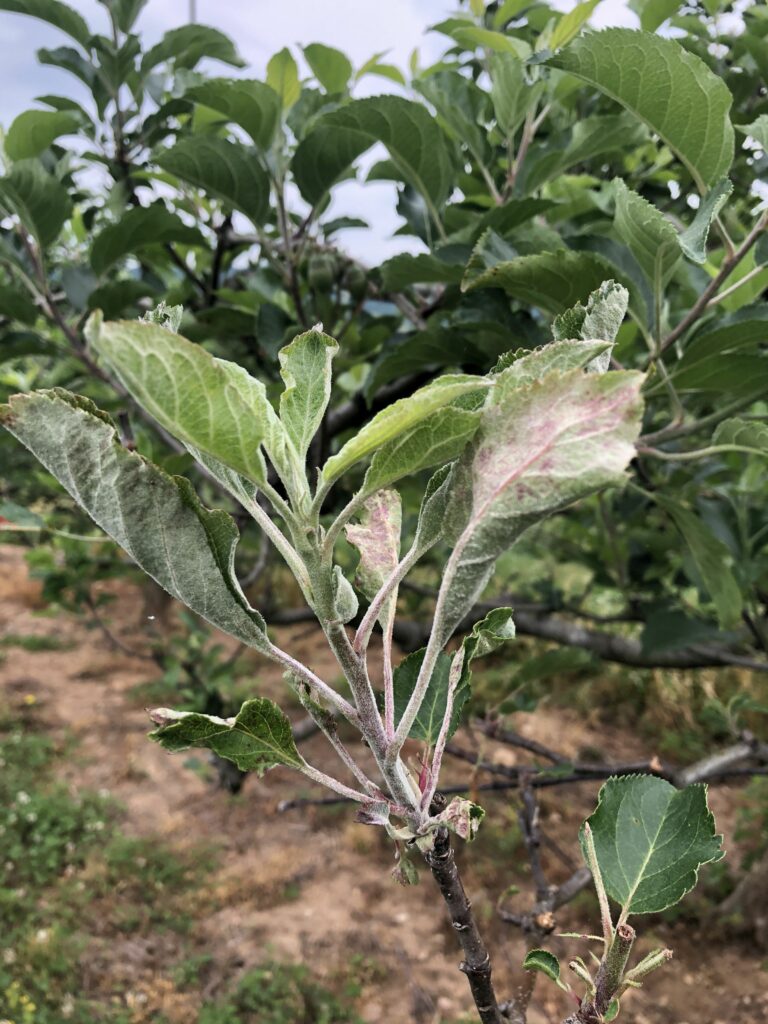 The powdery mildew fungus overwinters in buds and infects new shoots as they emerge. If you do see flag shoots, your first line of defense is to get them out the tree and out of the orchard. Multi-site protectant fungicides such as captan and mancozeb have marginal efficacy against powdery mildew, so if you are relying on these products for scab control during this period, be sure to slip a single-site fungicide into the mix. In general, stobilurins (FRAC 11) have performed well in our trials at MHCREC, but I’m hesitant to recommend them at this time of year because of GLS and Bitter Rot concerns later on. DMIs (FRAC 3) demonstrate a range in activity against powdery mildew (some work better than others) but I’ve generally observed excellent mildew control with Procure and Topguard. In general, SDHIs have performed “ok” in our field trials, but should be adequate for mildew control at this time of year. Axios has also demonstrated good to excellent efficacy in trials conducted in Michigan and New York.
The powdery mildew fungus overwinters in buds and infects new shoots as they emerge. If you do see flag shoots, your first line of defense is to get them out the tree and out of the orchard. Multi-site protectant fungicides such as captan and mancozeb have marginal efficacy against powdery mildew, so if you are relying on these products for scab control during this period, be sure to slip a single-site fungicide into the mix. In general, stobilurins (FRAC 11) have performed well in our trials at MHCREC, but I’m hesitant to recommend them at this time of year because of GLS and Bitter Rot concerns later on. DMIs (FRAC 3) demonstrate a range in activity against powdery mildew (some work better than others) but I’ve generally observed excellent mildew control with Procure and Topguard. In general, SDHIs have performed “ok” in our field trials, but should be adequate for mildew control at this time of year. Axios has also demonstrated good to excellent efficacy in trials conducted in Michigan and New York.
FRAC 3 (DMI fungicides) should be your go-to for rust control. You don’t need to break the bank either. Some of the older fungicides like Rally 40WSP will do a fine job against apple rusts. Other options included Topguard, Procure, Inspire Super, Cevya, and Indar 2F. Now is the time to start protecting against this pathogen.
Fire Blight (Blossom Blight)
All unprotected, open, and intact blossoms are susceptible to fire blight infection. Blossom blight initiated during the spring as the pathogen, overwintering in cankers, begins to ooze and is disseminated to open flowers, primarily by rain splash or by insects. Upon arrival to an open blossom, bacterial multiplication occurs on the stigmatic surface of the flower, provided that enough heat units have accumulated to support reproduction. At this point the flower is not considered infected and the presence of the bacteria on the stigmatic surface presents an ideal time for management with bactericides. Even the infection of a few blossoms can set the stage for catastrophic losses later in the season, due to the systemic movement of the pathogen through xylem tissue. There is a high to severe risk for blossom blight infection this week (week of March 30th). Please refer to this post.
Not knowing the current status of resistance in pathogen populations in your particular orchards or your greatest concerns, it’s hard to recommend a one-size-fits all program. However, below are some considerations for fungicides for the pink/bloom period:
- Mancozeb should be the backbone of your fungicide program at this point. The “half rate” (e.g. 3 lb/A) should be used.
- Consider a DMI (FRAC 3) fungicide such as Inspire Super or Cevya, a SDHI fungicide such as Aprovia or Miravis, or a DMI/SDHI premixed product such as Luna Flex in tank mixture with Mancozeb. Axios will also provide good control of scab and powdery mildew. If you don’t apply a FRAC 3 this week, make sure to include one in your tank next week for rust control
- I would avoid using any strobilurins (FRAC 11) fungicides at this point. You will need these for bitter rot and Glomerella leaf spot control. Same deal with captan-hold off on it until you can no longer spray mancozeb.
- Blossom blight infection events are predicted for the week of March 30, 2025. I’ll be posting infection alerts throughout the week, but as a primer please refer to this post



